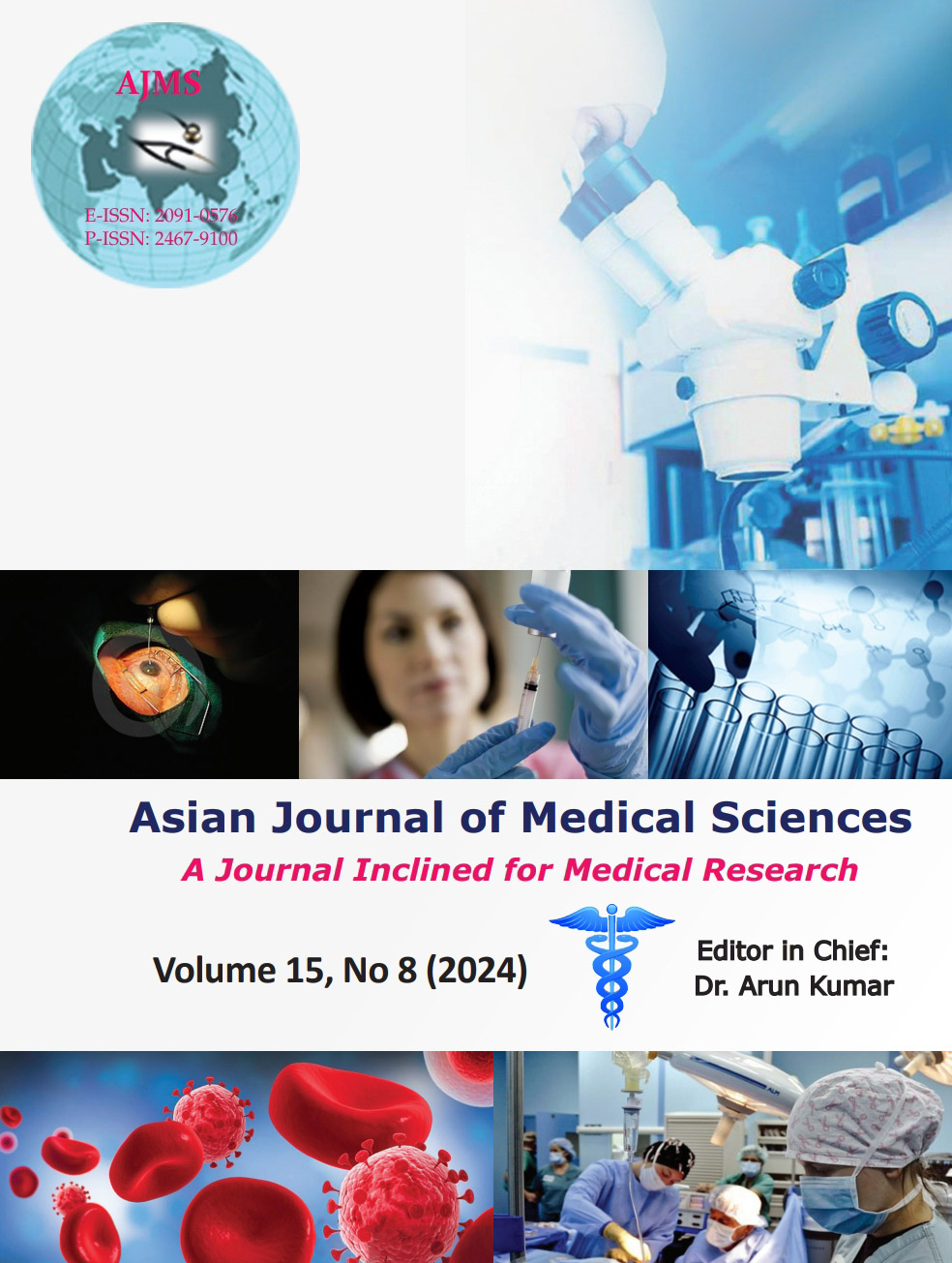Bacterial, fungal pathogens, and antimicrobial resistance patterns in ocular infections: Insights from a tertiary care hospital, North Karnataka
Keywords:
Ocular infections; Bacterial isolates; AntibioticsAbstract
Background: Ocular infections, including conjunctivitis, keratitis, and endophthalmitis, significantly impact eye health, leading to morbidity, visual impairment, and blindness if not treated.
Aims and Objectives: This study focuses on reviewing and analyzing the prevalence of bacterial and fungal pathogens in ocular infections and assessing their antimicrobial susceptibility patterns at Vijayanagar Institute of Medical Sciences, Ballari.
Materials and Methods: A cross-sectional study was conducted by collecting ocular infection samples from January 01, 2022, to December 31, 2022. Samples, including corneal scrapings and conjunctival swabs, underwent initial procedures such as Gram staining and were inoculated on various agars. Antimicrobial susceptibility testing was performed using the Kirby–Bauer disk diffusion method.
Results: Out of 404 evaluated samples, corneal scrapings were predominant, with a significant incidence of fungal and bacterial growth. Aspergillus spp. and Pseudomonas spp. were the most common fungal and bacterial isolates, respectively. Antimicrobial susceptibility testing revealed that Gram-negative bacilli showed more susceptibility to gentamycin, ceftriaxone, and ciprofloxacin, whereas Gram-positive cocci were more susceptible to tetracycline and doxycycline.
Conclusion: The study highlights the cornea as the most common source of ocular infections, with Aspergillus and Pseudomonas spp. being the predominant fungal and bacterial pathogens, respectively. Identifying the prevalent species in this geographical area aids in early diagnosis and treatment, thereby preventing morbidity and improving patient outcomes. The antimicrobial susceptibility pattern observed suggests effective options for treatment, emphasizing the need for ongoing surveillance to adapt to resistance patterns.
Downloads
Downloads
Published
How to Cite
Issue
Section
License
Copyright (c) 2024 Asian Journal of Medical Sciences

This work is licensed under a Creative Commons Attribution-NonCommercial 4.0 International License.
Authors who publish with this journal agree to the following terms:
- The journal holds copyright and publishes the work under a Creative Commons CC-BY-NC license that permits use, distribution and reprduction in any medium, provided the original work is properly cited and is not used for commercial purposes. The journal should be recognised as the original publisher of this work.
- Authors are able to enter into separate, additional contractual arrangements for the non-exclusive distribution of the journal's published version of the work (e.g., post it to an institutional repository or publish it in a book), with an acknowledgement of its initial publication in this journal.
- Authors are permitted and encouraged to post their work online (e.g., in institutional repositories or on their website) prior to and during the submission process, as it can lead to productive exchanges, as well as earlier and greater citation of published work (See The Effect of Open Access).




